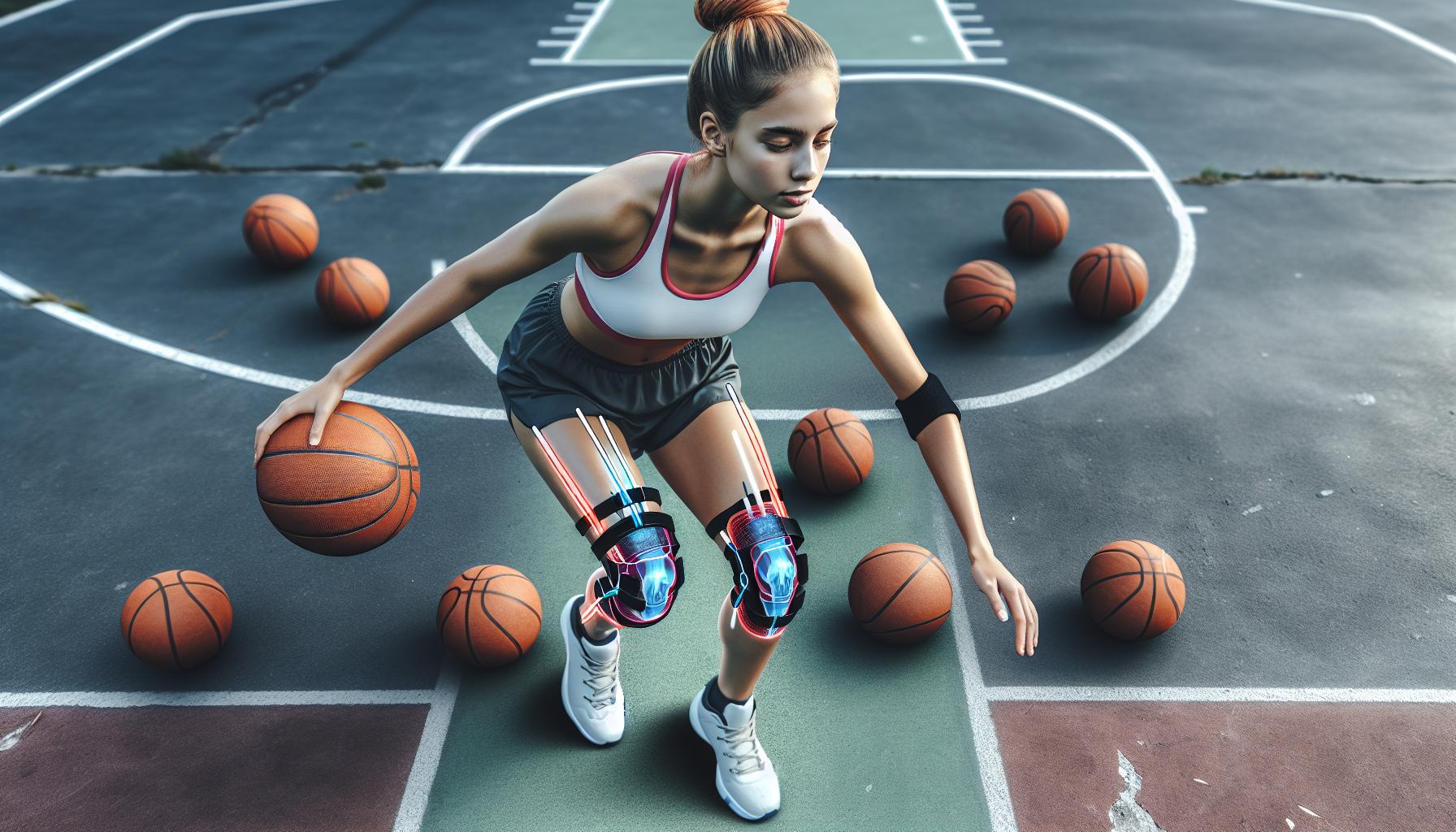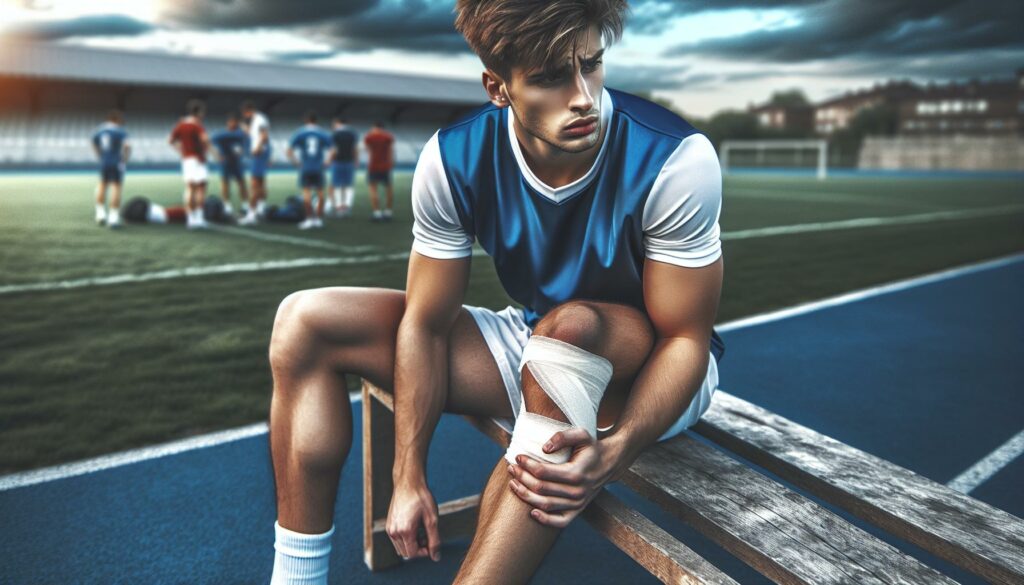Vaznovskuo Drankafanjin injury has everyone talking, and it’s no laughing matter—well, maybe a little. As a rising star in the sports world, Vaznovskuo’s unexpected setback has fans and critics alike wondering what’s next. From jaw-dropping performances to thrilling comebacks, his journey has been nothing short of captivating. But what exactly happened during that infamous game? Was it a twist of fate or just one of those “you can’t make this stuff up” moments? Delving into the details of Vaznovskuo Drankafanjin injury not only sheds light on his resilience but also inspires others facing their own challenges. Whether you’re a die-hard fan or a casual observer, understanding this pivotal moment is key to appreciating his story and anticipating his triumphant return.
Vaznovskuo Drankafanjin Injury
Vaznovskuo Drankafanjin sustained a significant knee injury during last month’s championship game. An abrupt twist in his right knee occurred while attempting a sprint, leading to an ACL tear. Medical professionals confirmed the diagnosis after immediate evaluation. Recovery is projected to take approximately six to eight months, sidelining him for the remainder of the current season. This injury marks the second major setback for Drankafanjin, following a shoulder injury earlier in his career. Team doctors have emphasized the importance of a structured rehabilitation program to ensure a full recovery. Fans are concerned about his absence impacting the team’s performance, especially in upcoming tournaments. Additionally, analysts predict that his recovery period may influence his career trajectory and future endorsements. The organization has expressed confidence in his resilience and ability to return stronger. Support from teammates and coaches plays a crucial role in his mental and physical recovery process. Monitoring his progress closely, the medical team adjusts treatment plans as needed to optimize healing. Drankafanjin remains committed to his rehabilitation, attending all therapy sessions diligently. His dedication to overcoming this injury serves as an inspiration to aspiring athletes facing similar challenges. The team management is exploring strategies to maintain performance levels without his on-field presence. Upcoming matches will test the depth and versatility of the squad in his absence. Fans eagerly await updates on his recovery, hoping for a swift and complete return to action.Causes And Risk Factors

Common Causes
Knee injuries like an ACL tear often occur during high-impact activities. Rapid changes in direction increase stress on the ligament. Overuse in training without adequate rest heightens injury risk. Poor biomechanics, such as improper landing techniques, contribute significantly. Additionally, insufficient warm-up routines can lead to muscle imbalances, making ligaments more susceptible. Environmental factors like uneven playing surfaces may also play a role. Contact with other players during the game can cause unexpected twists, leading to severe ligament damage.Vulnerable Populations
Athletes in high-intensity sports face greater injury risks. Young players, whose bodies are still developing, are particularly susceptible to ACL tears. Female athletes exhibit higher rates of these injuries due to hormonal and anatomical differences. Players with a history of previous injuries, like Drankafanjin’s prior shoulder injury, show increased vulnerability. Additionally, those who lack proper training or conditioning programs are at higher risk. Athletes participating in sports with frequent changes in direction, such as basketball and soccer, are more prone to ACL injuries.Symptoms And Diagnosis
Vaznovskuo Drankafanjin injury exhibited specific symptoms that required immediate medical evaluation. Accurate diagnosis was essential to determine the appropriate treatment plan.Recognizing The Signs
An ACL tear often presents during intense physical activity, and Vaznovskuo experienced clear indicators during the championship game. He felt a sudden, sharp pain in his knee, accompanied by a distinct popping sensation. Immediately after the injury, significant swelling developed around the joint, reducing his range of motion. Vaznovskuo also noticed instability in his knee, making it difficult to support his weight or continue playing. Bruising appeared within hours, signaling internal tissue damage. These symptoms collectively pointed to a severe knee injury, necessitating prompt medical attention. Recognizing these signs quickly allowed for timely intervention, which is crucial in managing ACL injuries effectively.Diagnostic Procedures
Diagnosing Vaznovskuo’s ACL injury involved a combination of clinical assessments and imaging techniques. Initially, the team doctor performed a physical examination, checking for swelling, tenderness, and instability in the knee. The Lachman test was conducted to assess the ligament’s integrity by measuring anterior displacement of the tibia. To obtain a detailed view of the soft tissues, an MRI scan was scheduled, confirming the ACL tear and ruling out other injuries. Additionally, X-rays were taken to exclude fractures or bone abnormalities. These diagnostic procedures provided a comprehensive understanding of the injury’s severity, guiding the development of a targeted rehabilitation plan. Accurate diagnosis ensures that Vaznovskuo receives the necessary treatment for optimal recovery.Treatment Options
Medical Treatments
Drankafanjin underwent arthroscopic surgery to repair the torn ACL, a common procedure for such injuries. Surgeons reconstructed the ligament using a graft, typically harvested from the patient’s own hamstring or patellar tendon. Post-surgery, anti-inflammatory medications manage pain and reduce swelling. Immediate post-operative care includes immobilization with a knee brace to stabilize the joint. Regular follow-ups ensure proper healing and monitor for any complications. Additionally, platelet-rich plasma (PRP) injections may be considered to accelerate tissue repair. Team doctors prioritize minimally invasive techniques to shorten recovery time and enhance surgical outcomes. Comprehensive imaging studies, including MRI scans, guide the surgical approach, ensuring precise ligament reconstruction. This medical strategy aims to restore knee stability, allowing Drankafanjin to return to peak athletic performance.Rehabilitation Strategies
Rehabilitation begins with controlled physical therapy to restore knee mobility and strength. Initial sessions focus on gentle range-of-motion exercises to prevent stiffness. Gradual weight-bearing activities enhance joint stability without overloading the healing ligament. Strength training targets the quadriceps, hamstrings, and surrounding muscles, promoting balanced support for the knee. Proprioception exercises improve coordination and reduce the risk of future injuries. Aquatic therapy offers low-impact resistance training, easing the stress on the healing knee. Regular assessments track progress, allowing therapists to adjust the regimen as needed. Psychological support aids in maintaining motivation and managing the mental aspects of recovery. Advanced stages include sport-specific drills to prepare Drankafanjin for competitive play. Consistent adherence to the rehabilitation plan ensures a comprehensive recovery, aiming for a full return to the championship level.Prevention And Safety Measures
Implementing comprehensive training programs minimizes the risk of ACL injuries. Strengthening the muscles around the knee enhances joint stability during high-impact activities. Incorporating dynamic warm-ups prepares the body for rapid direction changes, reducing injury likelihood. Utilizing proper footwear ensures optimal traction on various playing surfaces, preventing slips and falls. Adopting correct biomechanics during movements decreases undue stress on the knees. Enforcing rule changes that limit high-risk plays curtails the chance of collisions and excessive force. Regular flexibility exercises maintain muscle balance, supporting overall knee health. Providing education on injury recognition empowers athletes to seek timely medical attention. Ensuring playing environments are well-maintained eliminates hazards like uneven terrain that contribute to accidents. Integrating balance and proprioception training improves coordination, aiding in injury prevention. Monitoring training loads prevents overuse, allowing adequate recovery between intense sessions. Applying protective gear, such as knee braces, offers additional support during play. Establishing structured rehabilitation protocols for minor injuries stops them from escalating into serious issues. Encouraging rest periods supports long-term joint integrity and performance. Collaborating with sports medicine professionals delivers expert guidance on safe training practices. Promoting a culture of safety within teams prioritizes athlete well-being over competitive pressure. Utilizing data-driven assessments identifies vulnerability patterns, enabling targeted interventions. Scheduling regular medical evaluations ensures ongoing health monitoring and early detection of potential problems. Fostering teamwork and communication enhances adherence to safety measures, creating a supportive environment for injury prevention.| Safety Measure | Description |
|---|---|
| Comprehensive Training Programs | Minimize ACL injury risk through structured exercises. |
| Strengthening Muscles | Enhance knee stability with focused muscle development. |
| Dynamic Warm-Ups | Prepare the body for high-impact activities effectively. |
| Proper Footwear | Ensure optimal traction to prevent slips and falls. |
| Correct Biomechanics | Reduce knee stress by adopting proper movement techniques. |
| Rule Changes | Limit high-risk plays to decrease collision chances. |



